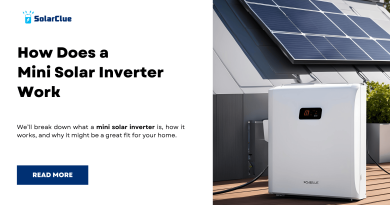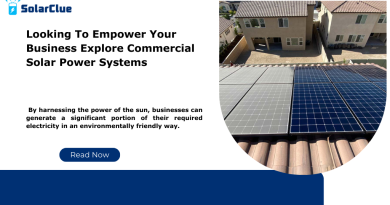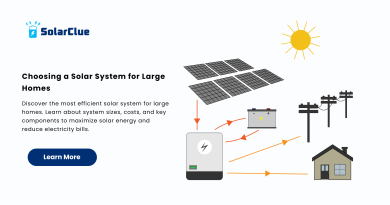Solar Inverters Without Battery
Switching to solar power is a great way to reduce electricity bills and your carbon footprint. If you’re exploring solar options, you might have come across the term “solar inverter without battery.” But what does this mean? How does it work? And is it the right choice for your home? This guide will walk you through everything you need to know about solar inverters without batteries, explained in simple terms.
Table of Contents
What is a Solar Inverter Without a Battery?
A solar inverter without a battery is a key component in a grid-tied solar power system. In this setup, the solar panels generate electricity, which is then converted by the inverter from direct current (DC) to alternating current (AC) that your home appliances use. The key difference here is that there’s no battery storage involved. The energy produced is either used immediately by your home or sent back to the grid.
Imagine your solar inverter as the brain of your solar system. It makes sure the energy produced by your solar panels is ready to power your lights, fridge, TV, and other devices. If you produce more energy than you need, that extra power is sent to the grid, often earning you credits on your electricity bill.
How Does a Solar Inverter Without Battery Work?
Here’s a simple breakdown:
- Energy Production: Your solar panels absorb sunlight and convert it into DC electricity.
- Energy Conversion: The inverter takes this DC electricity and converts it into AC electricity, which is what your home uses.
- Energy Use: The AC electricity is then used to power your home appliances directly. If your home requires more electricity than what the solar panels produce, the difference is drawn from the grid.
- Excess Energy: If your solar panels produce more electricity than your home needs, the excess is sent back to the grid, often resulting in a credit on your bill through a process called net metering.
In this system, there is no battery to store excess power. Instead, you rely on the grid to supply power when your solar panels aren’t producing enough, such as at night or during cloudy days.
Benefits of Using a Solar Inverter Without Battery
- Lower Initial Cost: One of the main advantages is cost. Batteries are expensive, and by choosing a system without one, you save money on the initial investment.
- Simplicity: Without a battery, your system is simpler. There are fewer components, making installation quicker and maintenance easier.
- Grid Dependability: Since you’re still connected to the grid, you don’t have to worry about running out of power. When the sun isn’t shining, the grid takes over.
- Net Metering: In many areas, you can sell excess energy back to the grid, reducing your electricity bill even further.
Drawbacks of a Solar Inverter Without Battery
- No Backup Power: Without a battery, your solar system won’t provide power during a blackout. This is because most grid-tied systems shut down during an outage for safety reasons.
- Reliance on the Grid: If you live in an area with unreliable grid power or frequent outages, not having a battery might be a disadvantage.
- Missed Savings: Without a battery, you can’t store excess energy for use later. Instead, you must draw power from the grid, potentially missing out on savings during peak rate times.
Types of Solar Inverters Without Battery
There are a few different types of inverters that can be used in a solar system without a battery:
- String Inverters
- How They Work: String inverters are the most common type. All your solar panels are connected in series, forming a “string,” and the DC electricity generated is converted into AC by a single inverter.
- Best For: Homes with unshaded roofs where all panels receive equal sunlight.
- Considerations: Shading on one panel can affect the entire system’s performance.
- Microinverters
- How They Work: Microinverters are small inverters attached to each solar panel. Each panel’s DC electricity is converted to AC individually, allowing each panel to operate independently.
- Best For: Homes with shading issues or complex roof designs.
- Considerations: Higher upfront cost due to more components.
- Power Optimizers
- How They Work: Power optimizers are installed on each panel, similar to microinverters, but they don’t convert DC to AC directly. Instead, they optimize the DC power before sending it to a central inverter for conversion.
- Best For: Homes with partial shading, providing a balance between string inverters and microinverters.
- Considerations: Requires a central inverter, adding to system complexity.
Here’s a comparison table to help you decide:
| Inverter Type | Best For | Advantages | Considerations |
|---|---|---|---|
| String Inverter | Uniform sunlight across panels | Cost-effective, simple to install | Reduced efficiency if any panel is shaded |
| Microinverter | Shaded/complex roof designs | Maximizes panel performance | Higher upfront cost |
| Power Optimizer | Partial shading, improved efficiency | Panel-level optimization, better performance | Requires a central inverter |
Is a Solar Inverter Without Battery Right for You?
Deciding whether to go with a solar inverter without a battery depends on your specific needs, location, and budget. Here are some factors to consider:
- Grid Reliability: If your area has a stable and reliable grid, a battery might not be necessary. You can rely on the grid for power when your solar panels aren’t producing enough.
- Electricity Costs: In areas with high electricity rates, net metering can be a huge advantage. By sending excess power back to the grid, you can significantly reduce your electricity bill.
- Initial Investment: A solar system without a battery is generally cheaper to install. If budget is a concern, this might be the best option.
- Backup Power Needs: If you’re concerned about power outages and want a reliable backup, you may need to consider a system with a battery or a generator.
Environmental Impact of Solar Inverters Without Battery
Solar energy, even without battery storage, is an environmentally friendly choice. By using solar power during the day, you reduce your reliance on fossil fuels and lower your carbon footprint. Additionally, the ability to send excess power back to the grid helps in promoting renewable energy usage across the community.
However, there is a trade-off. Without a battery, any excess energy your home doesn’t use is sent to the grid rather than being stored for later use. While this is great for net metering, it does mean you’re still partially dependent on non-renewable energy sources when the sun isn’t shining.
Conclusion
A solar inverter without a battery is a smart, cost-effective way to embrace solar energy, especially if you live in an area with reliable grid power. It simplifies your solar setup and lowers upfront costs while still providing significant savings on your electricity bill. However, it’s important to weigh the pros and cons based on your specific needs. If you’re looking for a straightforward solar solution without the added expense or complexity of a battery, a solar inverter without a battery could be the perfect fit.
Remember, every home is different. Consulting with a solar professional can help you make the best decision for your unique situation, ensuring that your investment in solar energy delivers the maximum benefits.
Visit SolarClue® to see the best Solar Inverter. SolarClue® actively sells solar energy products at discounts of up to 50% on its online marketplace.
FAQs
- What is a solar inverter without a battery?
- A solar inverter without a battery is a device that converts the DC electricity generated by solar panels into AC electricity for home use, without storing any excess energy.
- Can I add a battery to my solar system later?
- Yes, many solar systems can be upgraded with a battery at a later time if your energy needs change.
- Is a solar system without a battery reliable?
- Yes, as long as you have a reliable connection to the electrical grid, your solar system will provide consistent power.
- Will I save money with a solar inverter without a battery?
- Absolutely. You can save on both installation costs and electricity bills, especially if net metering is available in your area.
- What happens during a power outage?
- During a grid outage, most solar systems without a battery will shut down to prevent safety risks, so you won’t have power unless you have an alternative backup.
Switching to solar power is a big decision, and understanding your options is key. A solar inverter without a battery is a great choice for many homeowners, offering a balance of simplicity, cost savings, and environmental benefits.




